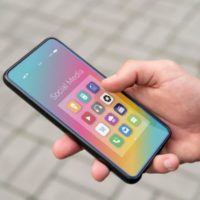Today is a sad day. I received an email  in my favorite email app ever, Mailbox by Dropbox, and this was what the heart-wrenching letter read:
“Hello Zain,
It’s with heavy hearts that we let you know Mailbox will shut down on February 26, 2016.
Mailbox ignited a shift in mobile email and many of its innovations are now ubiquitous across the industry. It’s been a great journey, and we’re proud of this impact and grateful to the community that helped make it possible.Â
When the Mailbox team joined Dropbox in 2013, we shared a passion for simplifying the way people work together. And solving the email problem seemed like a strong complement to the challenges Dropbox was already tackling.
But as we’ve increased our focus on collaboration, we realized there’s only so much an email app can do to fundamentally improve email. We’ve come to believe that the best way for us to improve people’s productivity going forward is to streamline the workflows that generate so much email in the first place.
We know saying goodbye to Mailbox will be hard for many. To help make the transition to a new email client easier, we’ve created guides and export tools. For more information about how we’ll be winding down Mailbox, please visit the Mailboxwebsite.
Thank you to everyone who helped bring Mailbox to life, whether by spreading the word, letting us know what you liked (and didn’t like), or simply using the product. You taught us so much, and we’re deeply grateful.
—The Mailbox Team”
Mailbox has been praised by its loyal users as the future of email. It centered around the idea that we should no longer be cluttered with dozens of unread emails haunting our digital inboxes. It defined a cyber heaven called “Inbox Zero.” It also introduced “snoozing,” which essentially let its users tackle important emails later and got them out of the main inbox until needed. It went even further and pushed a frontier with location-based snoozing, and allowed emails to reappear in the inbox when you arrived at a particular location. It worked extremely well for me when I wanted to deal with something when I got home or got to school. I greatly appreciated this feature and use it almost everyday. I also found Mailbox’s “auto archive” feature to act as a savior from the constant unwanted newsletters and otherwise irritating spam mail.
Mailbox also had a native client for Android, iOS, and OS X (the operating systems I use everyday), and having a native client is very important me. I don’t like having to open Chrome or Safari just to manage my email. Plus, native clients offer much better notification solutions than web-based clients on OS X.
This is not to say Mailbox was perfect, however. It has seen little development from Dropbox since the company purchased it in 2013 for $100 million. It was often riddled with bugs. I remember how it would just never load images on the OS X client, it drove me nearly mad. As a result, I have been looking for replacements recently. I tried Microsoft’s Outlook, who The Verge said was the best email app. It didn’t do it for me, and I hated the desktop application. It felt too traditional to me, and I longed for the simple, tasked-tailored experience Mailbox offered.
So, naturally I looked into Google’s option, Inbox. It isn’t perfect, either, and doesn’t have a native client for OS X. However, it is a great experience on Android and iOS. It is notable how much “Mailbox-influence” there is in Google’s Inbox, and that can be mostly clearly seen marking emails as “done” and the swipe-based user interface. The modern feel of swipes and managing email as a todo list is the future, as least for most people. Power users may not be a fan of this, but for the casual user who wants to “finish” dealing with their emails, it’s perfect. Inbox Zero, and an application centered around it, is the only way to provide a sense of relief from the haunting, never-ending world of email.
While I am sad to see Mailbox go, the app that sparked changed in creating email for the future, I am content seeings its principles largely determine the best email apps. Its influence can be seen all over Google Inbox, the “next best thing.”
One last toast. “To Inbox Zero!”
Via: Dropbox









